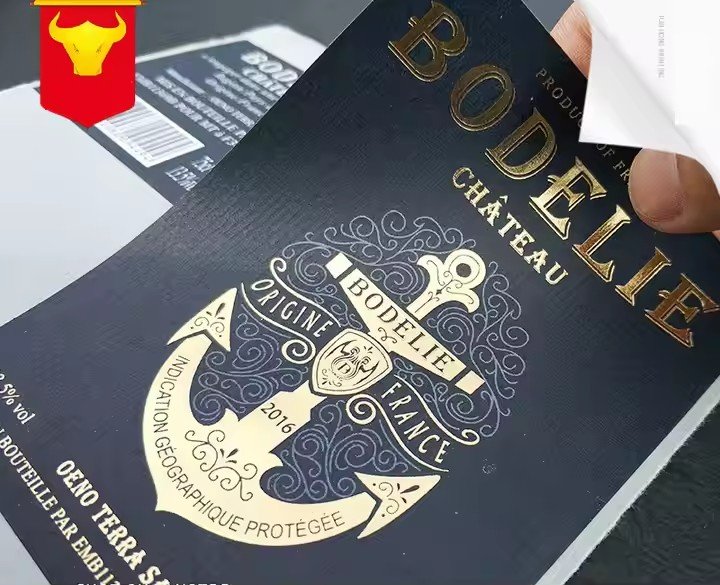Certification stickers serve as carriers of essential information such as product compliance, quality grade, and safety standards. The choice of paper directly affects the clarity of the conveyed information, the durability of the sticker, and the overall presentation of the brand image.
Unlike decorative stickers, certification stickers must maintain legibility over long periods in specific environments, while adapting to different substrates (such as metal, plastic, or paper packaging). Therefore, material selection should focus on four key dimensions — application scenario, durability requirements, print adaptability, and anti-counterfeiting needs — to systematically evaluate paper types and prevent issues such as blurring, peeling, or tearing caused by inappropriate paper choices.
- Application Scenario and Substrate: The Primary Basis for Selection
The intended environment and the surface material to which the sticker is applied are the primary considerations in paper selection, as different conditions impose distinct requirements for adhesion, weather resistance, and adaptability.
For indoor environments at normal temperatures (e.g., certification labels on electronic packaging or furniture products), substrates are often paper, plastic, or smooth metal. In such cases, priority should be given to adhesion performance and printing clarity.
If the substrate is paper packaging, options like coated paper or matte paper are ideal:
Coated paper has a smooth surface suitable for full-color printing, clearly reproducing certification logos and color details. It adheres well to paper-based surfaces without trapping air bubbles.
Matte paper offers a softer texture that minimizes glare, improving legibility — suitable for understated certifications such as environmental or quality management marks.
If the substrate is plastic or smooth metal (e.g., appliance casings, medical devices), choose synthetic paper or self-adhesive coated paper. These papers typically use acrylic pressure-sensitive adhesives, which provide strong bonding on non-porous surfaces, resist peeling, and withstand light abrasion without curling over time.
For outdoor or harsh environments (e.g., building materials certification, outdoor equipment labeling), the paper must exhibit weather resistance, water resistance, and UV protection. Conventional paper materials easily fade or deteriorate from sunlight or rain, so PVC synthetic paper or PET film paper are recommended.

PVC synthetic paper offers superior waterproofing and can be coated with UV-resistant layers to prevent fading.
PET film paper is both high-temperature and scratch resistant (withstanding temperatures from -40°C to 120°C), ideal for outdoor or temperature-variable surfaces (e.g., solar panel or outdoor lighting certifications), ensuring clear and intact certification marks even under harsh conditions.
For special or irregular surfaces (e.g., curved or textured products), flexible papers such as thin PET or soft PVC are suitable. Their elasticity allows close conformity to the surface, preventing wrinkles or cracks — common in pipeline or irregular product certification labels.
- Durability and Usage Duration: Matching Material Strength with Lifespan
The expected service life of the certification sticker determines the required paper strength and protection level.
For short-term use (e.g., temporary certification labels or compliance marks used during product transport), typically lasting 1–3 months, standard self-adhesive papers such as writing paper or kraft paper labels are cost-effective options. Although they lack strong weather resistance, they fulfill short-term information display needs and are ideal for single-use applications.
For medium-term use (e.g., certification labels on home appliances or consumer electronics), typically lasting 1–3 years, papers should balance durability and cost efficiency.
Laminated coated paper adds a transparent protective film, improving water and scratch resistance while preserving clarity against daily wear.

Synthetic paper (such as PP synthetic paper) naturally offers water and tear resistance without lamination, and its high color reproduction ensures precise display of certification marks.
For long-term use (e.g., industrial equipment or building material certifications), lasting over 3 years — often throughout a product’s entire life cycle — high-strength, weather-resistant specialty papers are essential, such as thick PET film or polyimide paper.
Thick PET film (50–100 μm) offers 5–8 times the tear strength of regular paper and can be treated with multiple coatings (UV protection, chemical resistance), effectively withstanding exposure to oils, solvents, and industrial chemicals.
Polyimide paper endures continuous temperatures above 200°C and provides excellent aging resistance, suitable for high-temperature equipment (e.g., engines, furnaces), maintaining legible certification information even in extreme conditions.
For abrasion-prone applications (e.g., frequently touched equipment surfaces, children’s product certifications), hard-surface synthetic papers with abrasion-resistant lamination are preferred. Their surface hardness (≥2H) effectively prevents scratches, ensuring the long-term visibility of certification symbols.
By aligning paper characteristics with the product’s usage environment, durability needs, and display requirements, manufacturers can ensure that certification stickers remain clear, durable, and compliant, while reinforcing the brand’s professional and trustworthy image.


